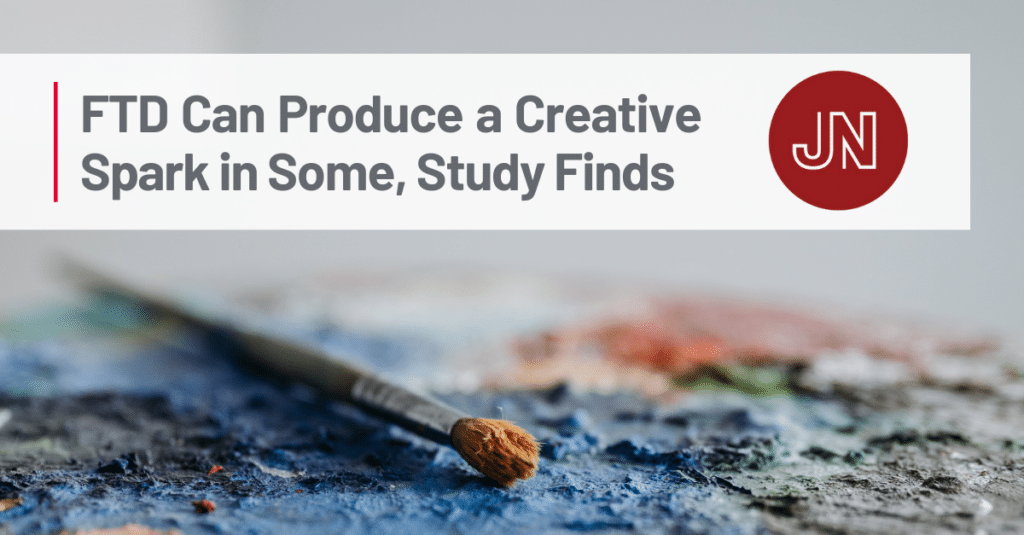FTD Can Produce a Creative Spark in Some, Study Finds

Brain atrophy patterns specific to FTD can let loose previously suppressed creative abilities in some people diagnosed with the disease, according to a study published earlier this year in JAMA Neurology.
The phenomenon has been studied by researchers for over 20 years, including prominent FTD researchers such as Bruce Miller, MD, a distinguished professor at the University of California, San Fransisco and a member of the AFTD Medical Advisory Council. In a 1996 letter to the editor of the Lancet medical journal, Dr. Miller described the experiences of a man with FTD who spontaneously began to paint after first showing symptoms of FTD at the age of 56. The man’s skills rapidly developed over a decade-long period, and he would later go on to win awards at local art shows for his work.
To identify how a sudden surge of creativity is possible, the authors of the recent study set out to analyze atrophy patterns common with FTD.
Researchers interviewed nearly 700 people, recruiting 68 participants with FTD and 51 people without FTD to participate as controls. Seventeen of the participants with FTD had become newly visually creative, with the surge of creativity typically beginning around symptom onset. The media the artful participants dabbled in were varied, with many expressing themselves through painting, while others did so by drawing, sculpting, knitting, or taking photographs.
The study authors compared the patterns of atrophy in people with FTD against medical scans taken from control participants, which helped researchers identify that the regions of the brain shrunk by FTD all suppressed activity in the dorsomedial occipital cortex, a segment of the occipital lobe that serves as the brain’s visual processing center. Atrophy in the areas of the brain that inhibited visual creativity was shared between study participants with FTD, though the atrophy was the most pronounced in artful participants.
The authors believe that the atrophy patterns may have given a boost to the visual cortex, which they speculate made visual experiences more intense for people affected by FTD. The data in the study supported this suggestion; one participant was noted to have higher glucose and metabolic levels in her occipital lobe despite declining in other areas of the brain.
Art therapy can be a fun and rewarding way for people with FTD to stimulate their minds and stay active. Click here to read about a program that helps people with dementia get in touch with their creative side.
By Category
Our Newsletters
Stay Informed
Sign up now and stay on top of the latest with our newsletter, event alerts, and more…
